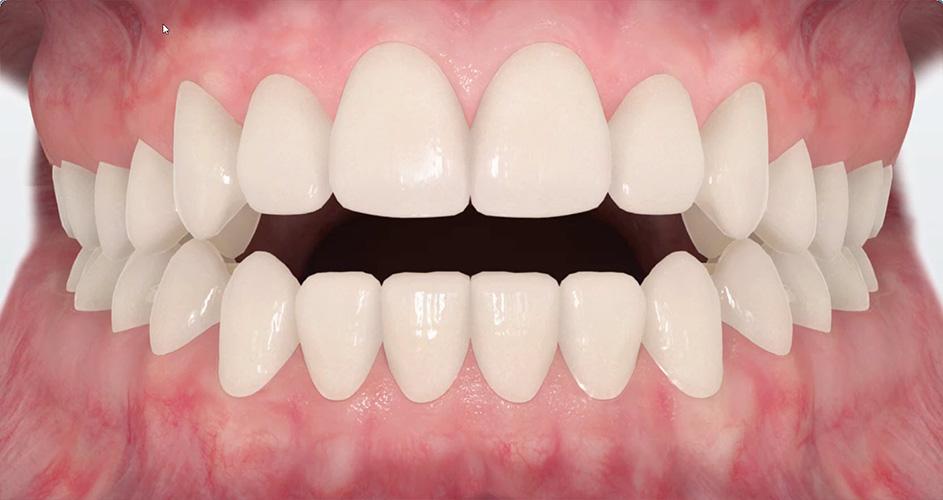Do I Have a Tongue Thrust?
When the tongue rests low in the mouth, it must push forward to swallow – this is called a tongue thrust. A tongue thrust and mouth breathing always go hand in hand – so if you’re mouth breathing, you also have a tongue thrust swallowing pattern. You should not see the tongue while talking or while eating. During chewing, the tongue should be going up to the spot on the roof of the mouth and then push the food or drink down and back, not forward. GERD (Gastroesophageal reflux disorder) may be related to tongue thrust. When swallowing with a tongue thrust, you can also burp excessively due to swallowing large amounts of air. This is the most recognizable sign that someone may need myofunctional therapy.

The most problematic aspect of this condition is where the tongue rests in the mouth. When someone has this condition, the tip of the tongue rests against or between the front teeth, and the entire tongue is positioned low in the mouth. Ideally, the tongue should rest in the top of the mouth and provide an internal support system for the upper jaw. It is important to recognize that a tongue thrust is a symptom. It can be an indicator of other health concerns involving the airway and breathing. When this kind of swallowing pattern is present, it’s almost inevitable that mouth breathing and an open mouth resting posture will also be found.
What Can Be Done to Fix It?
The only way to completely eliminate a tongue thrust is to learn new habits. The only way to learn new habits is to go through an exercise-based therapy program that retrains the muscles and the mind. Myofunctional therapy treatment is developed for a patient’s specific needs to help identify and correct any tongue-related issues.
Below are three of the most common signs to determine if you, or your child, have a tongue thrust:
- Mouth breathing is the most obvious sign. The mouth is open at rest, and the tongue is often forward or sticking out.
- Speech concerns, especially lisping, can be a sign, as are general problems with articulation, rate of speech, and vocal quality.
- Sucking habits, especially thumb sucking, can cause a tongue thrust to occur. When the thumb is constantly in the mouth, the swallowing pattern of the tongue develops incorrectly. It is important to realize that even when the sucking habit has stopped, the condition usually still remains.
Here are three of the most common signs of a tongue thrust:
- Mouth breathing is the most obvious sign – the mouth is open at rest, and the tongue is often forward or sticking out.
- Speech concerns, especially lisping, can be a sign, as are general problems with articulation, rate of speech, and vocal quality.
- Sucking habits, especially thumb sucking, can cause a tongue thrust to occur. When the thumb is constantly in the mouth, the swallowing pattern of the tongue develops incorrectly. It is important to realize that even when the sucking habit has stopped, the condition usually still remains.
A tongue thrust and mouth breathing will:
- Make treatment generally much more difficult for the orthodontist, because spaces are harder to close and teeth are more difficult to align.
- Slow down your orthodontic treatment, meaning that braces need to be worn for a longer period of time.
- Make your teeth move again after the braces are removed, which can lead to needing braces multiple times.
